Market Satisfaction Gaps… your key to B2B organic growth
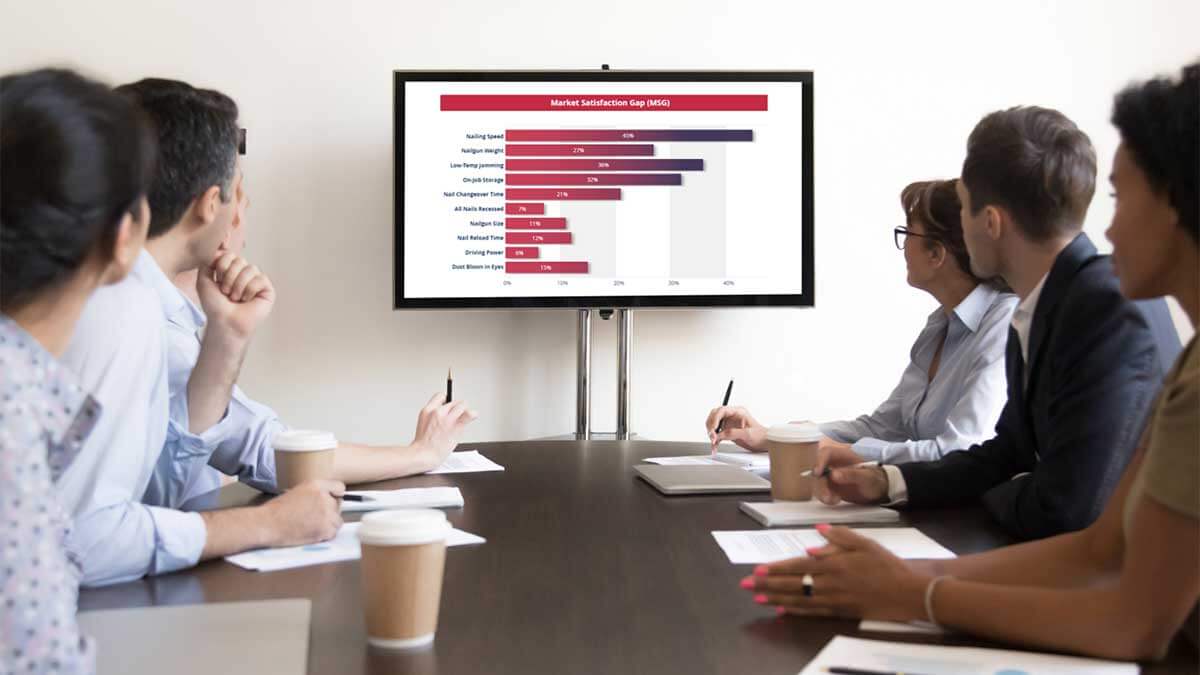
What single new practice can drive your company’s long-term organic growth more than any other? Hint: Few companies do this today, but that’s changing… and someday this will likely be a common practice. The answer: The disciplined use of Market Satisfaction Gaps (MSG) as a required “admission ticket” for entering the costly product development stage.
Market Satisfaction Gaps provide a language for customers to tell you their needs with unprecedented clarity and precision. It’s a language based on simple math, but that’s not what makes this special. What makes it a game-changer is Market Satisfaction Gaps allow no room for…
- Confusion… misunderstanding customer needs and their proper priorities
- Bias… altering customer needs to better fit our pre-conceived solutions
- Filtering… cherry-picking customer needs to match those we hoped to hear
We’ll explain Market Satisfaction Gaps in this article, but for a more complete description, download our white paper, Market Satisfaction Gaps. While you’re at it, check out these 13 Case Stories showing how New Product Blueprinting practitioners use Market Satisfaction Gaps to drive breakthrough B2B innovation. Let’s begin with how you create them.
Market Satisfaction Gaps provide a language for customers to tell you their needs with unprecedented clarity and precision.
How to create Market Satisfaction Gaps
Imagine your company makes corrugated packaging for e-commerce customers like Amazon and Zappos. You want to deliver high-value innovation to this market, so you first conduct 6-to-10 qualitative Discovery interviews. These interviews let you avoid errors of omission… failing to uncover unarticulated customer needs. You’ll likely uncover dozens of outcomes (desired end results), such as…
- Minimize the likelihood of box damage from moisture.
- Maximize the percent of recyclable content in new boxes.
- Minimize the frequency of crushed boxes due to vertical loading.
Next you conduct a round of quantitative Preference interviews. These let you avoid errors of commission… failing to pursue the right customer needs. You ask two questions for each outcome: a) How important is this outcome, and b) how satisfied are you today with your ability to achieve it? You digitally project your notes for maximum customer engagement. It looks like this when using Blueprinter® software:
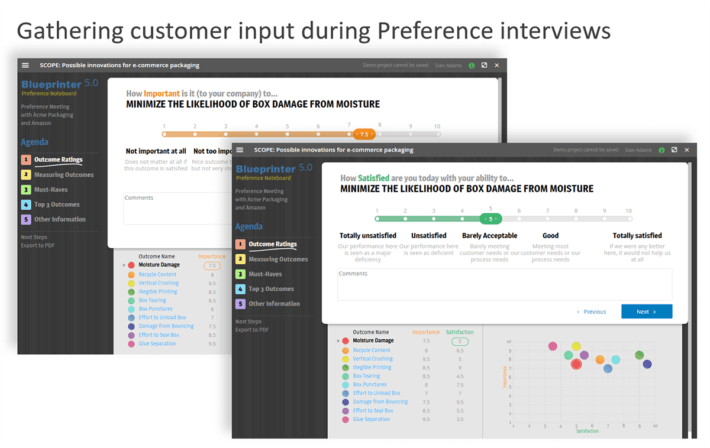
The software calculates MSGs based on your Preference interview results, using this simple formula:
Market Satisfaction Gap = avg. importance rating x (10 – avg. satisfaction rating)
If the average market importance rating (IMP) was “8” and the average satisfaction rating (SAT) was “6”, your Market Satisfaction Gap for this outcome would be 8 x (10 – 6) = 32%. Blueprinter software delivers these Gaps in a bar chart format as shown.
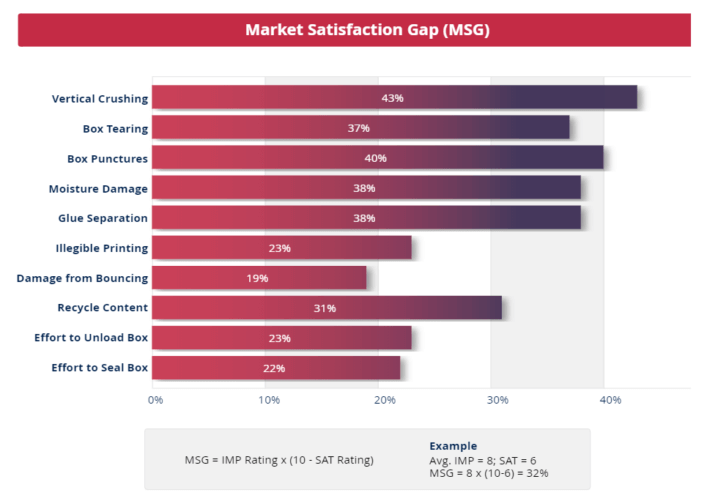
How to use Market Satisfaction Gaps
Since we developed this methodology in 2005, we’ve used it with hundreds of new-product teams on every continent in a broad range of B2B industries. We’ve learned this: If an outcome has a Gap over 30%, it indicates the market is eager for improvement. These are the outcomes you should pursue. After all, the only way to gain a price premium is to improve something important (high IMP rating) that needs improving (low SAT rating).
The only way to gain a price premium is to improve something important that needs improving.
When you insist on your teams using Market Satisfaction Gaps, they…
- stop guessing at customer needs
- stop pursuing outcomes customers don’t care about
- stop making errors of commission
- stop incurring senseless commercial risk
Your teams only work on outcomes that matter to customers. What if every outcome scores well below 30%? Simple: The team stops working on this project… so it can turn its attention to a project with real market needs.
How to drive growth with Market Satisfaction Gaps
Here’s why this impacts your company’s growth: For rapid, profitable, sustainable growth, nothing beats this goal: Understand and meet customer needs better than others. Our research—based on 10,000+ years of B2B professional experience—finds you should especially focus on the “understand” part. (See What Drives B2B Organic Growth.) Our study of 24 growth drivers found:
- The #1 driver of profitable, sustainable growth is strong value propositions.
- The #1 differentiator between strong and weak value providers is front-end work.
- The #1 most desired area to improve is market insight.
Confirmation bias is seeking and interpreting data in a manner that supports our pre-conceived notions. Most innovation processes treat confirmation bias with apathy, when the proper response is dread.
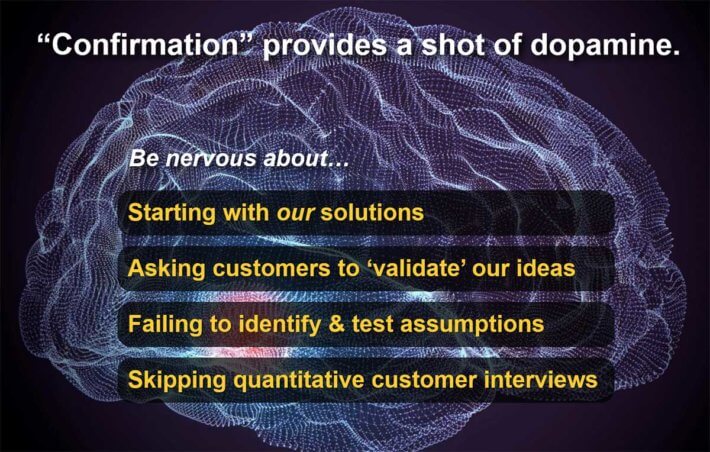
Without Market Satisfaction Gaps, you can bet your market insight is distorted by confirmation bias.
We only know one sure-fire way to tame confirmation bias: quantitative customer insight. You need to gather hard numerical data directly from customers, and ensure it can’t be filtered, modified or biased on its way to your product design planning.
How to institutionalize Market Satisfaction Gaps
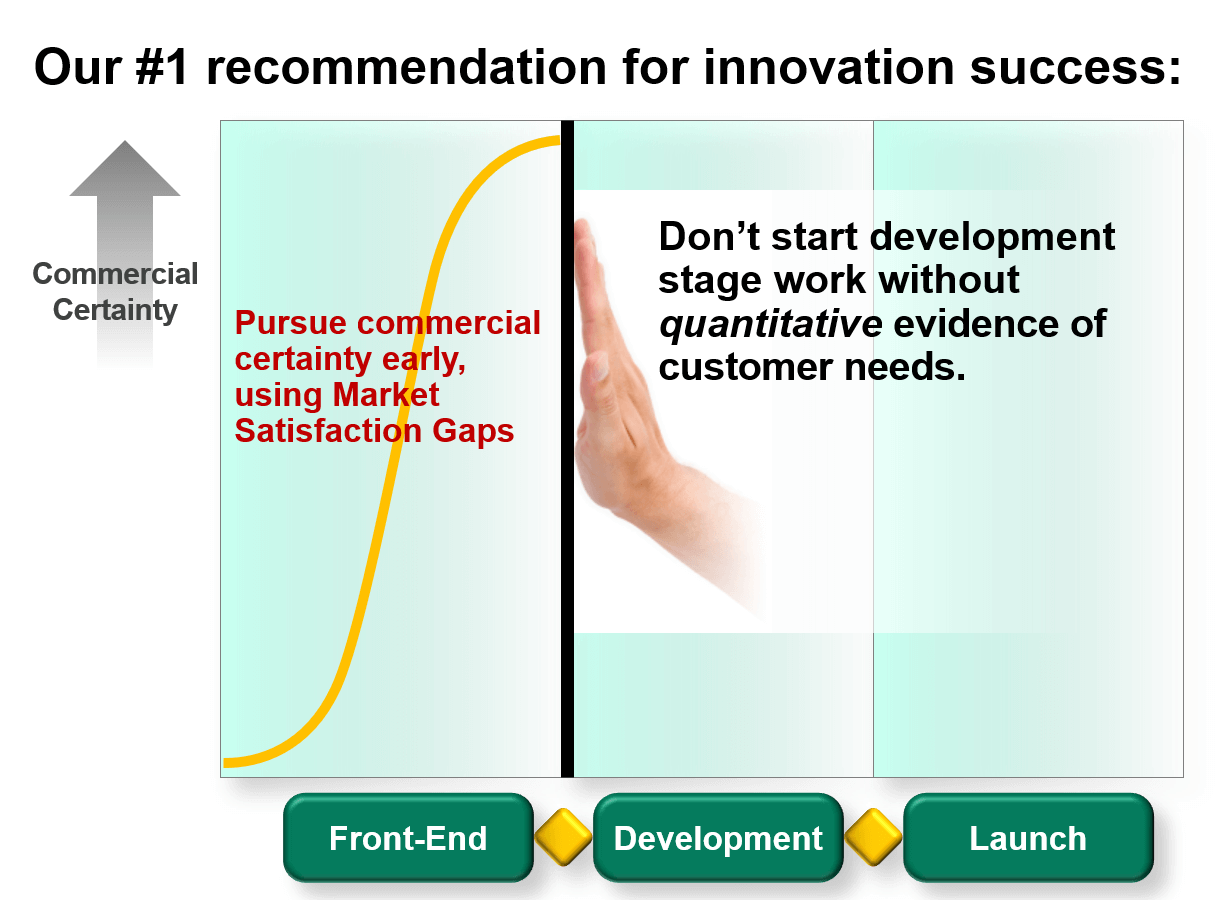
Want to weaponize customer insight for an overwhelming competitive advantage? Require your new product teams to develop Market Satisfaction Gaps. Now, don’t do this for technology development—just product development. And don’t require this for small projects. (For guidelines, see the white paper, Market Satisfaction Gaps.) Here is our #1 recommendation for innovation success: Don’t start development stage work without quantitative evidence of customer needs.
Want to weaponize customer insight for an overwhelming competitive advantage?
To institutionalize the use of Market Satisfaction Gaps, we recommend using an innovation metric called the Commercial Confidence Index (CCI). It’s easy to calculate:
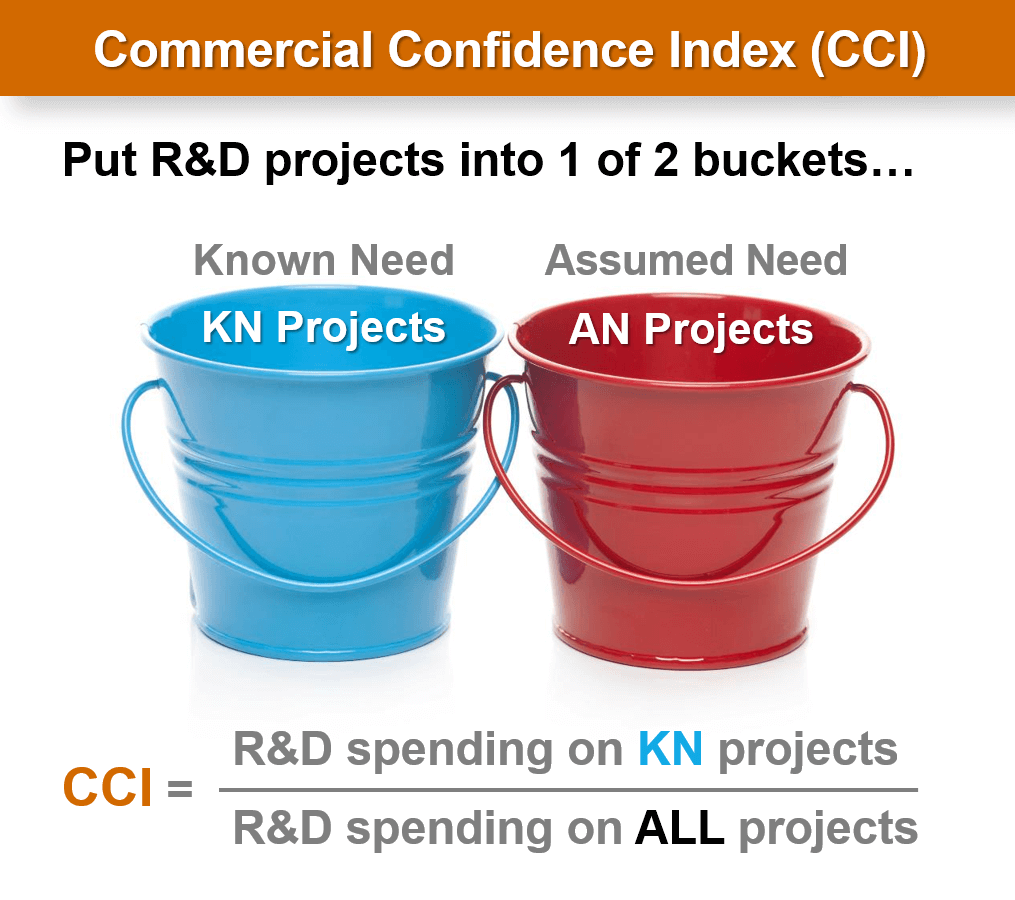
- Step 1: Calculate your annual R&D spending for each significant product development project (not technology or process development).
- Step 2: For each project, ask if you have quantified evidence of customer needs, e.g. MSG. If “yes,” the project goes in the “Known Need” bucket. All other projects go in the “Assumed Need” bucket.
- Step 3: The CCI is your annual R&D spending on Known-Need projects divided by annual spending on all product development projects.
The CCI metric will tell you if you’re getting better at understanding customer needs over time. Everything changes once teams understand this is the only way to gain access to development-stage R&D.
Learning more…
Want to quickly enlighten a colleague on this topic? Ask them to view these two-minute videos at www.leadersguidevideos.com:
- Lesson 16: Avoid errors of commission
- Lesson 19: Insist on data-driven innovation
To learn more about Market Satisfaction Gaps, just contact us. And to see how easy they are to build, check out Blueprinter software. We’ll be glad to give you a web-conference “tour” if you’d like.
This could be your first step in building an innovation competency that puts you years ahead of your competitors. Now that’s a gap to bring you real satisfaction.
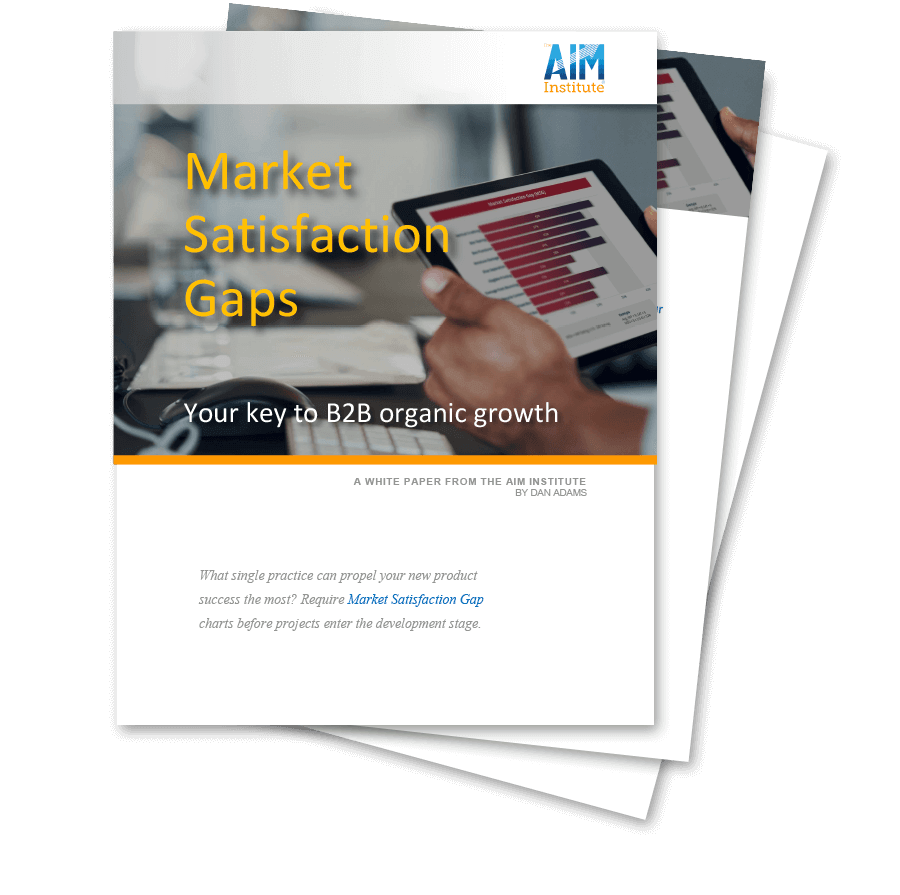
Comments